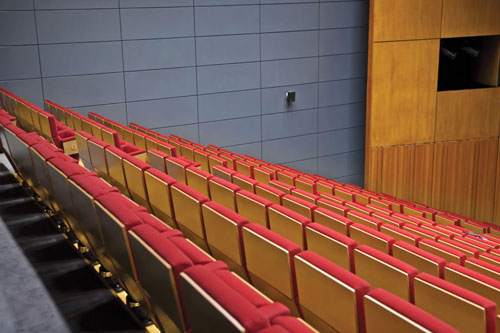Whole System Acoustical Treatments
Learning Objectives:
- Analyze and explore the fundamentals of interior acoustical design treatment and their relationship to green buildings and sustainable design.
- Examine the primary selection and specification characteristics of interior acoustical treatments.
- Assess the multiple other qualities of acoustical treatments that can contribute to green and sustainable building design.
- Recognize and identify the elements of a whole system approach to acoustical management that collectively contribute to sustainable indoor environmental quality.
Credits:
Interior environments that are well designed strive to address all of the human sensory experiences within them. As such, the design process often pays ample attention to light quality and control as a visual sensory experience. Equally important, however, is the need to address sound quality and control as an auditory sensory experience, particularly in settings where audible speech is a primary activity such as educational buildings. This can have both immediate and long-term impacts on the users of these spaces. In the interest of achieving green or sustainable design, it is also incumbent on the designers to design, specify, and select systems and materials that not only provide effective acoustical performance, but also meet all of the relevant green building criteria.
Acoustics and Sustainability Overview
As the green building movement has developed in recent years, an increasingly recognized component that is helping to define a sustainable interior environment is acoustic performance. Just as daylight and views contribute to positive indoor environmental quality (IEQ) characteristics, so too, acoustic performance addresses the control of both wanted and unwanted sound in an indoor space. While acoustic performance has been a common part of many building design types, it has increasingly been the focus of attention in school buildings for a number of good reasons.
The U.S. Green Building Council (USGBC) has been a strong leader for the promotion of highly sustainable school environments through the LEED® for Schools Program. Within that specialized version of the LEED® rating system, acoustic performance is a specific criterion in two cases. First, there is a mandated prerequisite for minimum acoustic performance. The stated intent of this prerequisite is “To provide classrooms that are quiet so that teachers can speak to the class without straining their voices and students can effectively communicate with each other and the teacher.” While it would seem to many that this is a basic and commonly achieved criterion, the built condition in many school buildings indicates otherwise.
 |










